|
Published on Archi.ru (https://archi.ru) |
|
| 07.05.2024 | |
|
The Wrap-Up |
|
|
Julia Tarabarina |
|
| Studio: | |
|
The competition project proposed by Treivas for the first 2021 competition for the Russian pavilion at EXPO 2025 concludes our series of publications on pavilion projects that will not be implemented. This particular proposal stands out for its detailed explanations and the idea of ecological responsibility: both the facades and the exhibition inside were intended to utilize recycled materials. The project of the Russian pavilion developed by Treivas appears to be the last on the list of competition pavilions from 2021-2022 that we managed to obtain for publication on our website, thus in some way concluding this series. This concept, like Sergey Nebotov’s project, participated in the first competition of 2021, about which it is known that the site was not yet precisely defined, although it was also long, stretched into the depth of the exhibition grounds, and large, and that the competition was conducted very quickly, literally “on the fly”. Meanwhile, the Treivas project is described in detail and even includes the idea of the exhibition inside the pavilion. The Russian Pavilion at EXPO 2025 in Osaka. Creating a future society for our lives. The main façadeCopyright: © TreivasThe architects proposed to design the facades of the three-story pavilion in the spirit of the Recycle group, whose works – quite complex sculptures made from recycled materials – adorn the Galitsky Park in Krasnodar; they also participated in Biennale Arte 2024 in Venice . Consequently, the facades were supposed to be textured and made of some recycled material – incidentally this project seems to be the only one of all the competition projects that raised the subject of ecological responsibility. In addition, the facades were conceived as dynamic in two senses: not only the lighting but also the very texture of the facades was supposed to change. 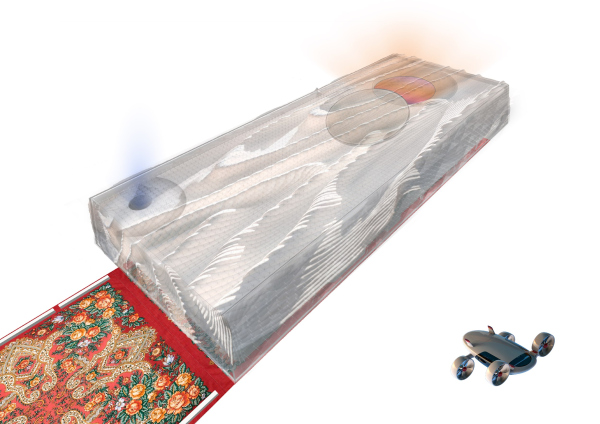 The Russian Pavilion at EXPO 2025 in Osaka. Creating a future society for our livesCopyright: © Treivas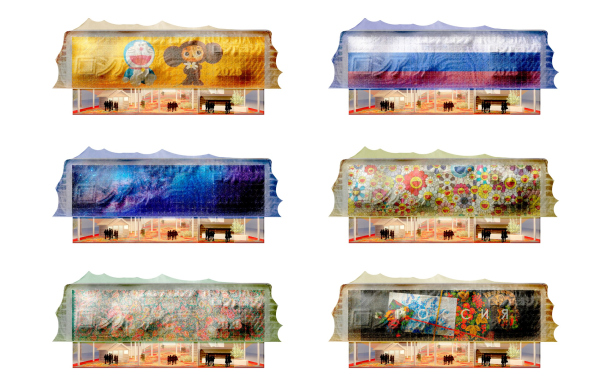 The Russian Pavilion at EXPO 2025 in Osaka. Creating a future society for our lives. Dynamic media façade, optionsCopyright: © Treivas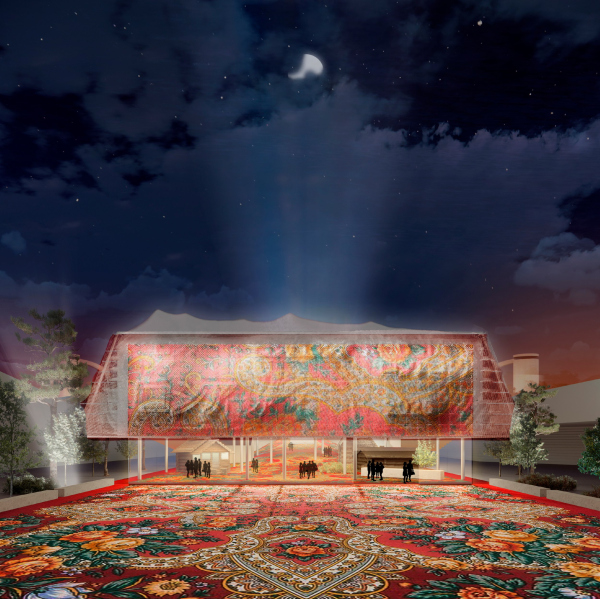 The Russian Pavilion at EXPO 2025 in Osaka. Creating a future society for our livesCopyright: © Treivas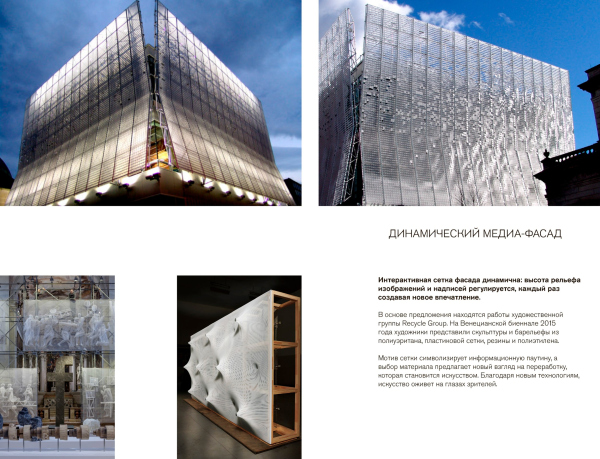 Relief façade references made from recycled materials. The Russian Pavilion at EXPO 2025 in Osaka. Creating a future society for our lives. Examples of facade workCopyright: © TreivasAccording to the project, the ornament of the Pavloposad shawl is laid out in the square in front of the pavilion with crumb rubber (a secondary raw material), which would be another recycling element. The pattern of the square seamlessly entered the open first floor, where as part of the main exhibition, Treivas proposed to bring real izbas for the exhibition – of course, observing all the precautions. Modern, concise houses of the same scale were planned to be placed right next to them, all of them would host an exposition; in the far end of the pavilion, in the same paradigm of individual volumes, a restaurant would be placed with tables arranged in the space of the first floor like in a covered city square. 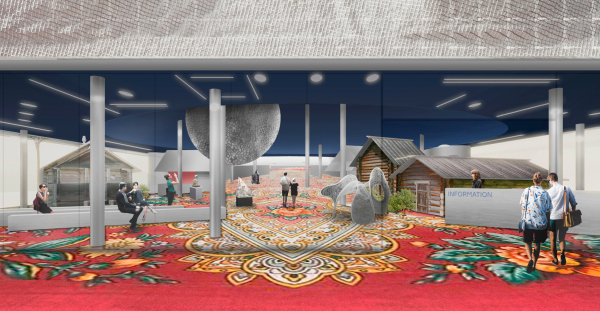 The Russian Pavilion at EXPO 2025 in Osaka. Creating a future society for our lives. THe entrance group, the expositionCopyright: © Treivas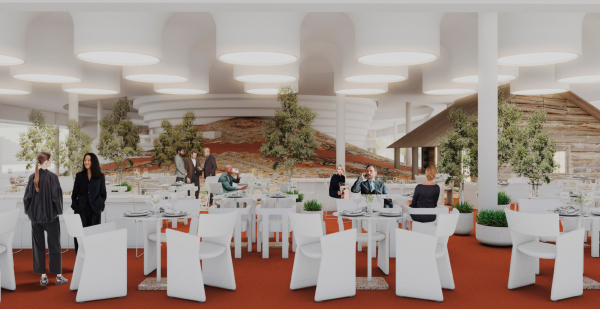 The Russian Pavilion at EXPO 2025 in Osaka. Creating a future society for our lives. The restaurantCopyright: © TreivasAll the three floors and the roof are connected by the opening of the conference hall, which passes through the volume diagonally, forming a large “tube” amphitheater, which also acts as the main “stiffening rib” in the project.  The Russian Pavilion at EXPO 2025 in Osaka. Creating a future society for our lives. The longitudinal section viewCopyright: © Treivas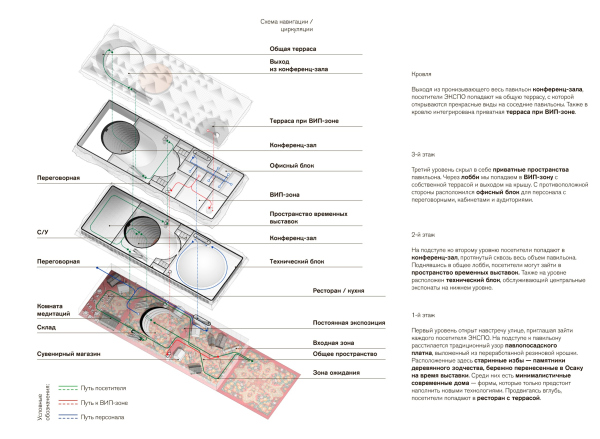 The Russian Pavilion at EXPO 2025 in Osaka. Creating a future society for our livesCopyright: © Treivas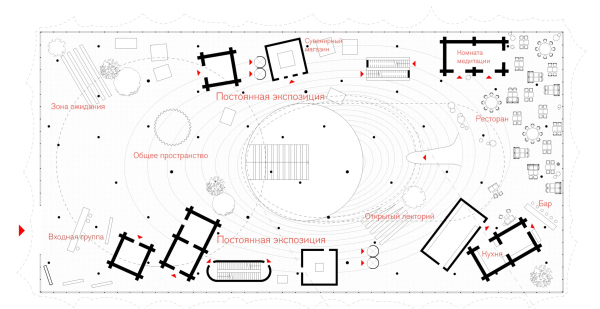 The Russian Pavilion at EXPO 2025 in Osaka. Creating a future society for our lives. Plan of the 1 floorCopyright: © Treivas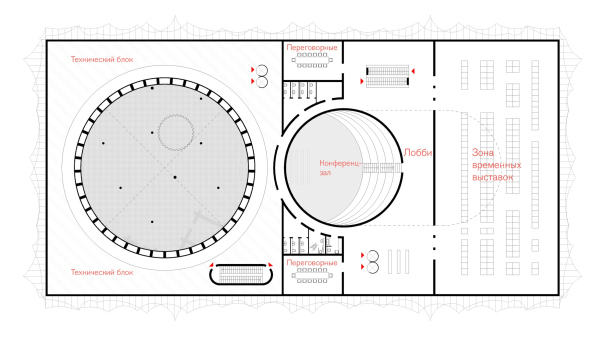 The Russian Pavilion at EXPO 2025 in Osaka. Creating a future society for our lives. Plan of the 2 floor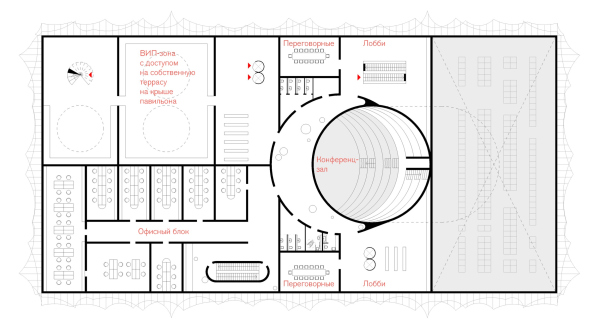 The Russian Pavilion at EXPO 2025 in Osaka. Creating a future society for our lives. Plan of the 3 floorCopyright: © Treivas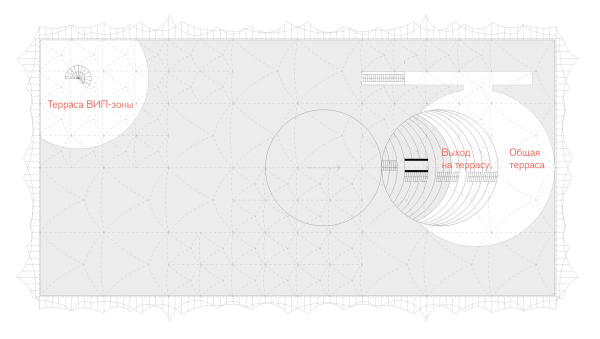 The Russian Pavilion at EXPO 2025 in Osaka. Creating a future society for our lives. The roofCopyright: © TreivasThe majority of the project’s ideas are based on the interplay between Russian and Japanese national patterns. The Pavloposad shawl is responsible for the Russian national color and simultaneously serves as a reminder of the silk scarf, in which, according to Japanese traditions, gifts are wrapped when presented to the hosts of the house. Another idea, the wooden house, is also strong in both Japan and Russia. On the other hand, the round “atrium” conference hall is designed in the form of a circle, which is something that Sou Fujimoto surrounded the entire EXPO 2025 with. However, somewhere in the background/periphery of consciousness, Krutikov’s flying cities emerge. 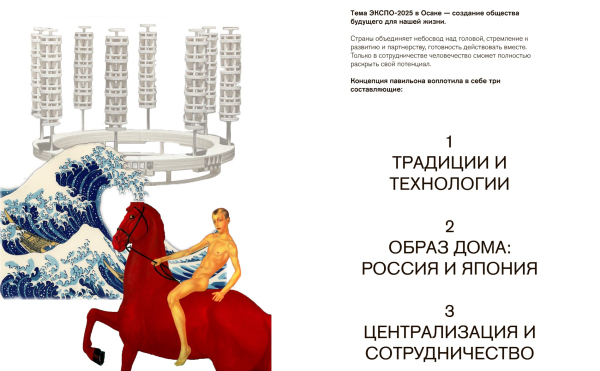 The Russian Pavilion at EXPO 2025 in Osaka. Creating a future society for our livesCopyright: © Treivas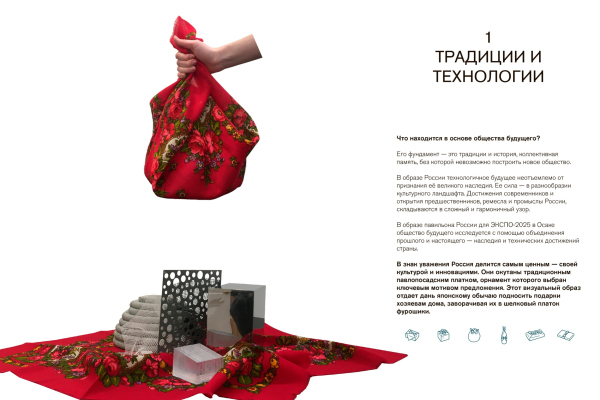 The Russian Pavilion at EXPO 2025 in Osaka. Creating a future society for our livesCopyright: © TreivasThe exhibition concept proposed by Treivas resonates with the architecture of the pavilion, as it is also based on recycling and media. The former – the recycled materials – are the basis for real “sculpture” exhibits created by contemporary artists based on masterpieces of Russian art, while the latter – the media installations – would show the visitors the masterpieces themselves.  The Russian Pavilion at EXPO 2025 in Osaka. Creating a future society for our livesCopyright: © Treivas The Russian Pavilion at EXPO 2025 in Osaka. Creating a future society for our lives. Concept of the exposition: new technologies and VR-museum of Russian masterpiecesCopyright: © Treivas |
|
